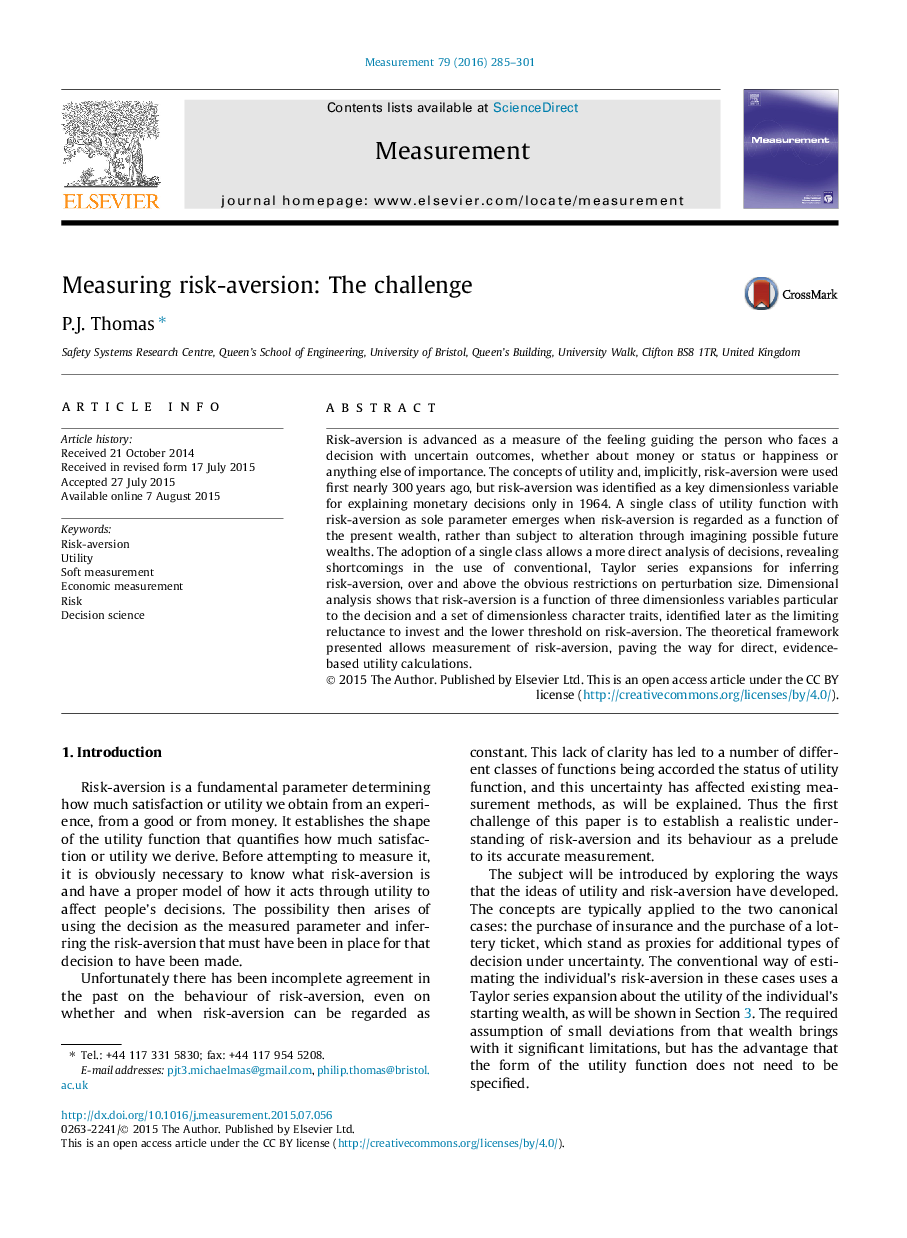| کد مقاله | کد نشریه | سال انتشار | مقاله انگلیسی | نسخه تمام متن |
|---|---|---|---|---|
| 7124382 | 1461508 | 2016 | 17 صفحه PDF | دانلود رایگان |
عنوان انگلیسی مقاله ISI
Measuring risk-aversion: The challenge
ترجمه فارسی عنوان
اندازه گیری ریسک پذیری: چالش
دانلود مقاله + سفارش ترجمه
دانلود مقاله ISI انگلیسی
رایگان برای ایرانیان
کلمات کلیدی
خطر گریزی، سودمند اندازه گیری نرم اندازه گیری اقتصادی، خطر، علم تصمیم گیری،
موضوعات مرتبط
مهندسی و علوم پایه
سایر رشته های مهندسی
کنترل و سیستم های مهندسی
چکیده انگلیسی
Risk-aversion is advanced as a measure of the feeling guiding the person who faces a decision with uncertain outcomes, whether about money or status or happiness or anything else of importance. The concepts of utility and, implicitly, risk-aversion were used first nearly 300Â years ago, but risk-aversion was identified as a key dimensionless variable for explaining monetary decisions only in 1964. A single class of utility function with risk-aversion as sole parameter emerges when risk-aversion is regarded as a function of the present wealth, rather than subject to alteration through imagining possible future wealths. The adoption of a single class allows a more direct analysis of decisions, revealing shortcomings in the use of conventional, Taylor series expansions for inferring risk-aversion, over and above the obvious restrictions on perturbation size. Dimensional analysis shows that risk-aversion is a function of three dimensionless variables particular to the decision and a set of dimensionless character traits, identified later as the limiting reluctance to invest and the lower threshold on risk-aversion. The theoretical framework presented allows measurement of risk-aversion, paving the way for direct, evidence-based utility calculations.
ناشر
Database: Elsevier - ScienceDirect (ساینس دایرکت)
Journal: Measurement - Volume 79, February 2016, Pages 285-301
Journal: Measurement - Volume 79, February 2016, Pages 285-301
نویسندگان
P.J. Thomas,
